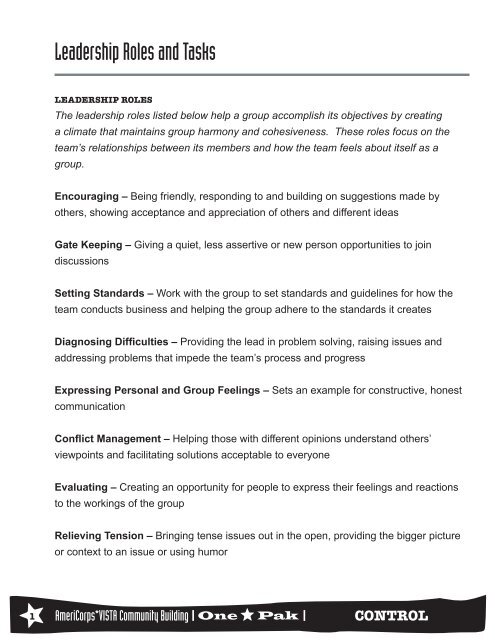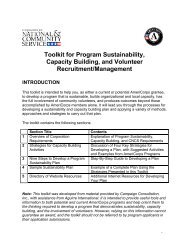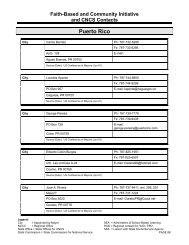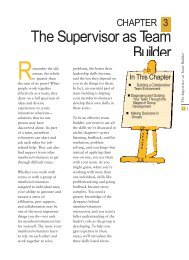Leadership Styles
Leadership Styles
Leadership Styles
Create successful ePaper yourself
Turn your PDF publications into a flip-book with our unique Google optimized e-Paper software.
1<br />
<strong>Leadership</strong> Roles and Tasks<br />
LEADERSHIP ROLES<br />
The leadership roles listed below help a group accomplish its objectives by creating<br />
a climate that maintains group harmony and cohesiveness. These roles focus on the<br />
team’s relationships between its members and how the team feels about itself as a<br />
group.<br />
Encouraging – Being friendly, responding to and building on suggestions made by<br />
others, showing acceptance and appreciation of others and different ideas<br />
Gate Keeping – Giving a quiet, less assertive or new person opportunities to join<br />
discussions<br />
Setting Standards – Work with the group to set standards and guidelines for how the<br />
team conducts business and helping the group adhere to the standards it creates<br />
Diagnosing Difficulties – Providing the lead in problem solving, raising issues and<br />
addressing problems that impede the team’s process and progress<br />
Expressing Personal and Group Feelings – Sets an example for constructive, honest<br />
communication<br />
Conflict Management – Helping those with different opinions understand others’<br />
viewpoints and facilitating solutions acceptable to everyone<br />
Evaluating – Creating an opportunity for people to express their feelings and reactions<br />
to the workings of the group<br />
Relieving Tension –<br />
Bringing tense issues out in the open, providing the bigger picture<br />
or context to an issue or using humor<br />
AmeriCorps*VISTA Community Building One Pak CONTROL










